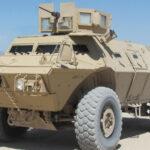For over six decades, Sandia National Laboratories and Los Alamos National Laboratory have quietly sustained one of the most critical components of the United States’ strategic deterrence infrastructure: space-based nuclear detonation detection. This mission—largely invisible to the public—relies on a constellation of sensors deployed aboard military satellites to provide global monitoring for atmospheric or exoatmospheric nuclear events. Despite shifts in geopolitical threats and satellite architectures, the mission endures as a cornerstone of treaty verification and early warning capabilities.
Origins in Cold War Treaty Verification
The U.S. space-based Nuclear Detonation Detection System (NDS) was born out of Cold War-era arms control efforts. Following the 1963 Limited Test Ban Treaty (LTBT), which prohibited nuclear tests in the atmosphere, outer space, and underwater, there emerged a need for reliable global monitoring mechanisms. The Department of Energy’s national laboratories—primarily Sandia and Los Alamos—were tasked with developing sensors capable of detecting telltale signatures of nuclear detonations from orbit.
These sensors were first deployed aboard Defense Support Program (DSP) satellites beginning in the 1970s. The DSP constellation provided persistent infrared surveillance for both missile launch detection and nuclear event monitoring. Over time, sensor packages evolved to include optical detectors (e.g., bhangmeters), X-ray detectors, neutron sensors, and electromagnetic pulse (EMP) monitors—all designed to characterize the unique signatures produced by a nuclear explosion.
Modernization Through SBIRS and Beyond
As legacy DSP satellites age out of service, their roles have been gradually assumed by newer platforms under the Space-Based Infrared System (SBIRS), operated by the U.S. Space Force. SBIRS GEO satellites carry advanced infrared payloads that continue supporting missile warning missions while also hosting updated NDS sensor suites developed by Sandia and Los Alamos.
The current generation NDS payloads are modularized for integration across multiple host platforms—including geosynchronous orbit (GEO), highly elliptical orbit (HEO), and even low Earth orbit (LEO) systems. This flexibility ensures continuity amid evolving satellite architectures such as the planned transition to Next-Gen OPIR (Overhead Persistent Infrared) systems under development by Lockheed Martin.
According to DOE’s National Nuclear Security Administration (NNSA), which funds much of this work through its Office of Defense Nuclear Nonproliferation Research & Development (DNN R&D), these sensors are rigorously tested against simulated nuclear environments using pulsed power facilities like Sandia’s Z Machine or underground test data from historical archives.
Sensor Capabilities: Detecting Signatures Across Spectra
The NDS sensor suite is designed to detect multiple physical phenomena associated with a nuclear detonation:
- Bhangmeters: Optical devices that detect characteristic double light flashes from high-altitude or space detonations.
- X-ray detectors: Capture prompt radiation bursts typical of exoatmospheric explosions.
- Neutron/gamma-ray detectors: Identify specific radiation signatures indicative of fission or fusion reactions.
- EMP monitors: Measure electromagnetic pulses that can disrupt electronics over wide areas.
This multi-modal approach enables cross-validation across sensor modalities to reduce false positives from natural phenomena such as lightning or meteoroid impacts. Importantly, these detections support not just military alerting but also compliance verification under treaties like CTBT (Comprehensive Nuclear-Test-Ban Treaty)—even though the U.S. has signed but not ratified it.
Sustaining an Enduring Mission Amid Evolving Threats
The strategic rationale for maintaining robust global nuclear detonation detection remains strong amid rising tensions with peer adversaries such as Russia and China—both modernizing their strategic arsenals—and concerns about North Korea’s continued testing ambitions.
NNSA emphasizes that this mission is not merely legacy—it is actively modernized through digital engineering practices, AI-enhanced signal processing algorithms for anomaly detection, and expanded ground station infrastructure for rapid data dissemination across DoD users including USSTRATCOM and NORAD/NORTHCOM.
The labs’ collaboration also extends into training new generations of scientists through programs like Sandia’s Center for Global Security & Cooperation or LANL’s Nuclear Nonproliferation Science programs—ensuring continuity in both expertise and capability development into future decades.
A Quiet Backbone Supporting Strategic Stability
While often overshadowed by more visible missile defense systems or hypersonic weapons programs, space-based nuclear detonation detection remains an indispensable component of strategic stability architecture. It provides critical situational awareness in crisis scenarios where seconds count—and serves as a technical backbone underpinning international arms control regimes.
The continued partnership between Sandia National Laboratories and Los Alamos National Laboratory exemplifies how enduring science-and-technology investments yield long-term national security dividends—even when conducted far above Earth’s surface in silent vigilance against humanity’s most destructive force.









